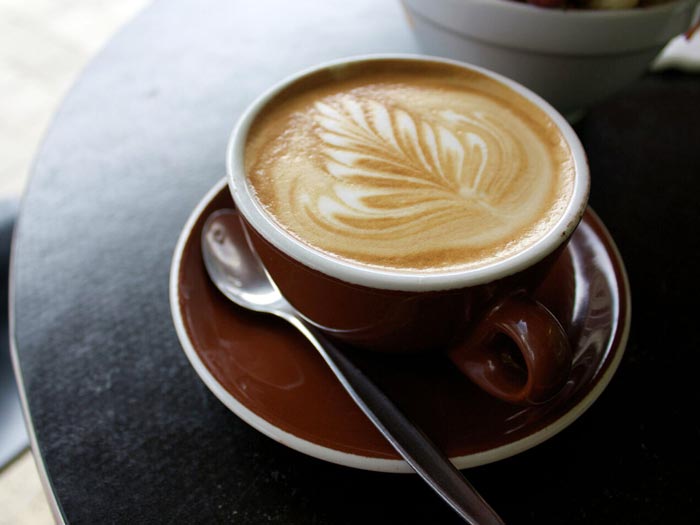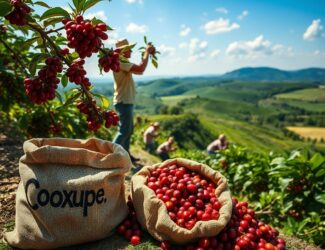
What is a flat white & how is it different from a latte?
Flat whites have become a staple on specialty coffee menus worldwide, offering a robust espresso experience complemented by steamed milk and a delicate layer of microfoam. But, as you savor this no-nonsense coffee option, do you truly understand its roots, how it’s crafted, and what distinguishes it from the ubiquitous latte? This exploration delves into the history of the flat white, its evolution, and the ongoing debate over its uniqueness compared to other popular espresso-based beverages.
A flat white is an espresso-based beverage featuring steamed milk, providing a powerful coffee taste with a creamy mouthfeel. Crafted with a small amount of steamed milk and a thin layer of microfoam, the flat white is the go-to choice for those seeking a rich coffee experience without compromising the indulgence of steamed milk.
Origins and Evolution:
Debates persist regarding the flat white’s origin, with claims from both Australia and New Zealand. Emerging in the 1980s, it transitioned from a regional specialty to a global café standard. Ben Bicknell, Strategic Projects Manager at Five Senses Coffee in Melbourne, suggests that the flat white naturally evolved in response to consumers shifting from instant coffee to espresso-based beverages. The request for a “flat” coffee, as opposed to the foamy cappuccino of the time, led to the creation of the flat white.
Understanding Latte and Cappuccino:
To distinguish the flat white, one must navigate the intricate world of espresso-based drinks, including lattes and cappuccinos. The term “latte” gained popularity in the 1980s, describing a coffee with warm milk, typically featuring a shot of espresso and topped with steamed and foamed milk. A cappuccino, on the other hand, is smaller and stronger, comprising one shot of espresso and a thick layer of milk foam.
Decoding the Differences:
Navigating the fine line between a flat white and a latte can be challenging, as each café may interpret these drinks differently. Traditionally, a latte is served in a 200 ml glass, while a flat white finds its home in a 180 ml ceramic cup, with slightly less dilution. Over time, variations in foam levels between the two have diminished, adding to the confusion.
Individual Perspectives on the Flat White:
The definition of a flat white can vary based on location and individual barista preferences. Jonathan Prestidge, Managing Director at Repack Espresso in Bath, UK, emphasizes the milk-to-coffee ratio as the key differentiator between a latte and a flat white. Felipe Cisneros, owner of Traviesa Coffee in Quito, Ecuador, suggests that the popularity of these drinks can depend on the coffee shop’s wave and the barista’s personal touch.
Size Matters, but Preferences Differ:
While the size of the cup and the coffee-to-milk ratio may differ, a consensus emerges—flat whites are generally smaller than lattes and contain a higher concentration of espresso. This makes them an ideal choice for those who appreciate the nuanced flavors of specialty coffee while still enjoying a dairy-based drink. However, the subjective nature of taste ensures there is no objective “better” option.
Strength and Sensory Experience:
Is a flat white stronger than a latte? The answer lies in its concentrated nature, offering a bolder coffee taste with the use of two espresso shots. The flat white expertly combines the intensity of espresso with the velvety mouthfeel of steamed milk. For those opting for plant-based alternatives, these can work well with flat whites, though they may produce less foam than dairy.
Final Thoughts:
Understanding what sets a flat white apart is valuable when placing an order, but personal preferences play a significant role. As Ben Bicknell notes, the crucial question extends beyond the drink’s definition: “Do coffee drinkers appreciate 80+ specialty coffee in their lattes and flat whites? And are they willing to pay a sustainable price for it?” In the end, the flat white remains a testament to the evolving coffee culture, inviting enthusiasts to explore and savor the diverse world of espresso-based beverages.
- By : Qahwa World
- On :
Latest Posts
- Coffee Prices Face Continued Pressure Amid Brazil Harvest Progress and Global Supply Outlook
- African Fine Coffees Association and Coffee Quality Institute Renew MOU
- CQI and Progreso Foundation Join Forces to Elevate Coffee Quality and Producer Prosperity
- Study Finds Coffee Compounds May Reduce Risk of Type 2 Diabetes
- Vanadi Coffee Shareholders Approve €1 Billion Bitcoin Treasury Strategy



